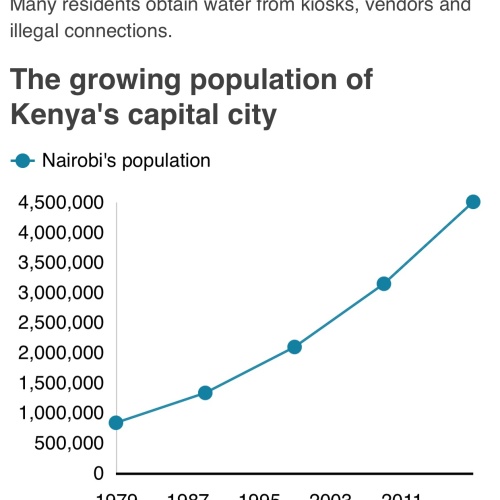Half-Degree of Warming = Big Impact On Water AvailabilityApproximately 117 million more people could face water shortages if global temperatures increase 2 degrees Celsius above pre-industrial levels compared to a 1.5-degree Celsius increase in temperatures, a new study suggests.
In a new study, published in Geophysical Research Letters, a journal of the American Geophysical Union, researchers examined how global freshwater could change under 1.5- and 2-degree Celsius increases in temperatures, targets set forth in the Paris Agreement.
"This is the first study to explore how limiting warming to 1.5 degrees [Celsius] would benefit global population exposure to water shortage using the HAPPI experiments," said Wenbin Liu, lead author of the study and assistant professor at the Chinese Academy of Sciences. "Some regions would be better off, but some regions would be worse off."
The new study shows the benefit of maintaining global warming at 1.5 degrees Celsius. Limiting global warming at 1.5 degrees Celsius translates to a less-severe decrease in water availability below normal conditions across most regions, including east and south Asia, east and west Africa and central Europe. For a few regions, however, this limit would be ineffective. Southeast Asia, northern Asia, southern Africa, southern Europe, the Mediterranean, eastern Canada, Greenland, Iceland, Alaska and northwest Canada would experience worsening water availability below normal conditions under both 1.5 degrees Celsius and 2 degrees Celsius of warming.
Plain Language SummaryThis study emerges from the lack of scientific investigations to inform climate policy about differences between two global warming targets (i.e., 1.5 and 2 °C) for the “Intergovernmental Panel on Climate Change Special Report on Global Warming of 1.5°C.” We seek to understand the following: How would water availability below normal conditions (the drier end of hydrological extremes) change at these targets? How would they affect the water shortage of human society? Could we limit the impact by stabilizing the global warming at 1.5 °C instead of 2 °C? To address these questions, we employ the HAPPI (half a degree additional warming, prognosis, and projected impacts) experiments, explicitly designed to differentiate impacts between these targets. Relative to the historical period, future water availability below normal conditions (less than median, e.g., 20th percentile or lower) would decrease in the midlatitudes and the tropics; the globe and most of the regions would endure water shortages. Relative to the 2 °C warming target, stabilizing temperature increase at 1.5 °C would constrain adverse impact on people suffering water shortages in most of the regions (particularly Central Europe, East Africa, East Asia, South Asia, and West Africa) but ineffective in Alaska/Northwest Canada, Southeast Asia, and Amazon. A global sum of this reduced risk is ~117 million people.
Wenbin Liu et al.
Global Freshwater Availability Below Normal Conditions and Population Impact Under 1.5 and 2 °C Stabilization Scenarios,
Geophysical Research Letters (2018)



 [/URL]
[/URL]